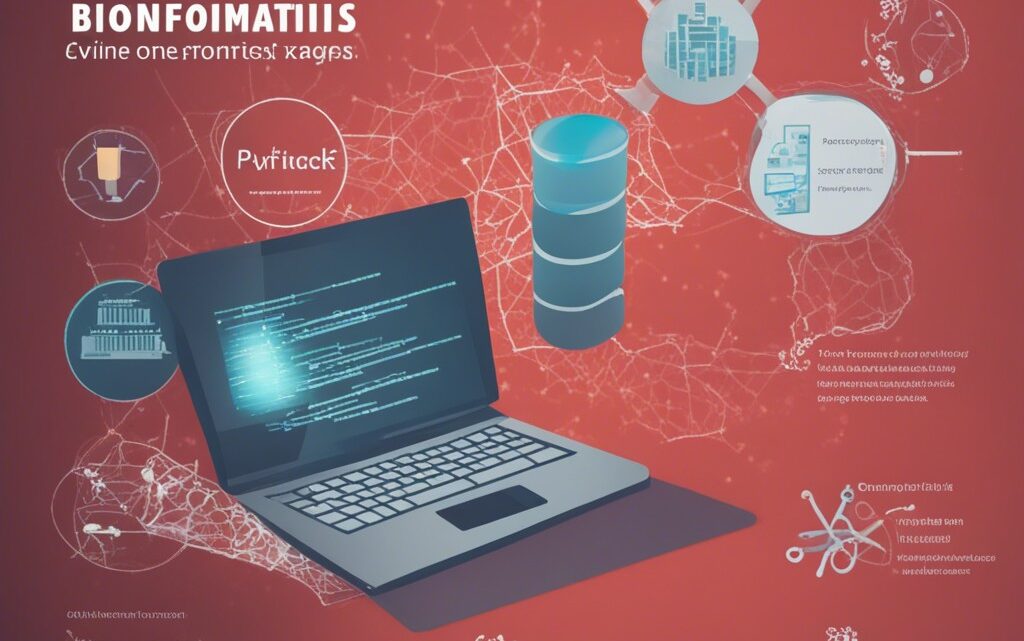
Omics Technologies Update
October 12, 2023The latest advancements in omics technologies have been marked by a notable focus on spatiotemporal omics, which combines advanced imaging techniques with DNA sequencing to map biological processes at a molecular level. This emerging technology has been recognized by the World Economic Forum for its potential to revolutionize understanding of biological systems and has been highlighted in their 2023 Emerging Technologies Report. Spatiotemporal omics could provide a comprehensive understanding of cellular functions and organ development, potentially leading to numerous therapeutic discoveries1.
A particular focus has been on spatial omics technologies, which are part of the broader spatiotemporal omics field. These technologies allow for a deeper understanding of biological processes by mapping them at the molecular level in a spatial context. Recent developments within spatial omics include spatial transcriptomics, which has applications in neuroscience and cancer studies among others. These advancements are expected to expand the roles of spatial multi-omics in biomedical applications, providing a comprehensive analysis of spatial transcriptome data and driving further research in this area2.
Another highlight is the increasing demand for single-cell analysis, which is driving market revenue growth in spatial omics technologies. This trend showcases the importance of analyzing biological processes at the single-cell level to gain a more nuanced understanding of cellular functions and disease mechanisms3.
Omics technologies continue to evolve, with the “four big omics” (genomics, transcriptomics, proteomics, and metabolomics) forming the basis, and branching into epiomics and interactomics. This progression reflects the ongoing exploration and understanding of the central dogma of molecular biology, and how these technologies are being developed to decode intricate biological processes4.
In addressing the practical challenges, the major hurdles are centered around data acquisition, processing, storage, and standardized reporting, particularly in the realm of spatial omics. These technical challenges need to be addressed to unlock the full potential of spatial omics technologies and ensure their broader application in bioinformatics research and beyond1.
Ethical considerations in bioinformatics research surrounding omics technologies include responsible data management, privacy concerns, and ensuring equitable access to these advanced technologies. Ethical conduct is paramount to promote trust and responsible utilization of omics data, which has the potential to significantly impact individuals and communities.
The continuous evolution of omics technologies, driven by both technological advancements and a growing understanding of biological intricacies, is poised to offer significant contributions to biomedical research and healthcare. The ethical, practical, and technical challenges accompanying these advancements necessitate a multidisciplinary approach to fully harness the transformative potential of omics technologies.
- Recent Developments in Omics Technologies
- Single-cell Sequencing: While high-throughput sequencing has been around for a while, the recent focus is on single-cell RNA-seq (scRNA-seq), which provides a higher resolution of cellular differences and a better understanding of the function of an individual cell in the context of its microenvironment.
- Multi-Omics Integration: Researchers are now integrating genomics, transcriptomics, proteomics, metabolomics, and more to provide a holistic understanding of biological systems.
- Synthetic Long-Read Sequencing: Technologies like PacBio and Oxford Nanopore have made it feasible to sequence long DNA fragments. These are particularly useful in understanding complex genomic regions, repeat sequences, and structural variations.
- AI & Machine Learning in Omics: The use of artificial intelligence, especially deep learning, in predicting gene functions, understanding genomic sequences, and identifying disease markers is a notable trend.
- Comprehensive Analysis in Advanced Bioinformatics
- Functional Annotation: Tools like Blast2GO, DAVID, and InterProScan provide insights into gene function, enriching sequence data with biological meaning.
- Pathway Analysis: KEGG, MetaCyc, and Reactome are databases and tools that help in understanding the biological ‘pathways’ active in a sample.
- Structural Bioinformatics: With the growth of omics data, predicting protein structures and functions is now more feasible. AlphaFold, developed by DeepMind, represents a breakthrough in protein folding prediction.
- Ethical Considerations in Bioinformatics Research
- Data Privacy: With the rise of personal genomics and direct-to-consumer genetic testing, there’s a significant concern over who can access this data and how it might be used.
- Consent and Ownership: Ensuring that genomic data is used with the consent of individuals and communities, and determining who has the right to share or profit from this data, are central ethical issues.
- Genetic Discrimination: There’s a potential for misuse of genetic information in areas like employment, insurance, and more.
- Gene Editing Ethics: Technologies like CRISPR/Cas9 have made gene editing more accessible. However, editing human embryos and germline editing present profound ethical concerns.
- Practical Challenges in Advanced Bioinformatics Research
- Data Storage: The sheer volume of data produced by omics technologies requires robust, scalable, and cost-effective storage solutions.
- Data Integration: Integrating disparate datasets, often in different formats and from different sources, is a challenge.
- Reproducibility: Ensuring that bioinformatics analyses are reproducible across different labs and researchers is vital.
- Computational Limitations: As datasets grow in size and complexity, there’s a continuous need for more computational power and efficient algorithms to analyze them.
- Emerging Applications in Health and Medicine
- Personalized Medicine: Omics technologies are facilitating the growth of personalized medicine by allowing for treatments tailored to individual genetic makeups. This approach promises better therapeutic outcomes with fewer side effects.
- Disease Biomarkers: Advanced bioinformatics combined with omics data can pinpoint disease biomarkers, enabling early diagnosis and more efficient therapeutic interventions.
- Microbiome Analysis: Gut microbiota has been linked to various health conditions. Through omics analyses, we can understand this complex ecosystem better and its association with diseases such as inflammatory bowel disease, obesity, and even mental health conditions.
- Eco-Metagenomics: This involves studying the genetic material recovered directly from environmental samples, providing insights into microbial communities in oceans, soils, and other habitats.
- Phylogenomics: The study of evolutionary relationships based on genomics data is refining our understanding of species evolution and divergence.Environmental and Evolutionary StudiesFunctional Metagenomics: By studying the collective genome of environmental samples, we can discover new enzymes and metabolic pathways, potentially useful in industries like biotechnology and pharmaceuticalFuture Prospects and Predictions in Omics Technologies
- Tailored Therapeutics: With the rapid advancements in genomics and other omics branches, there’s a push towards precision medicine, tailoring treatments based on individual genetic makeup. This could revolutionize areas like cancer treatment, where therapies could be specifically designed based on the patient’s and tumor’s genomic profiles.
- Environmental and Agricultural Genomics: Beyond human health, omics technologies will play a crucial role in understanding environmental changes at the microbial level and optimizing crops for climate change. It’s predicted that in the near future, we will have more genome-edited crops, tailor-made to withstand specific environmental stresses or pests.
- The Microbiome Frontier: The human microbiome, which comprises all the bacteria, viruses, and other microorganisms living in and on our bodies, has been dubbed the “next frontier” in medicine. Deep diving into the ‘metagenomics’ of these microbial communities can provide insights into conditions from obesity to mental health disorders.
- Real-time and Point-of-Care Sequencing: The dream of having portable devices that can sequence DNA in real-time, potentially in clinical settings or even at home, is getting closer to reality. This could drastically speed up diagnosis and treatment.
6. Bridging the Knowledge Gap
- Democratizing Access: While advanced omics technologies are becoming more commonplace in research settings, there’s a need to democratize access, ensuring that researchers across the globe, regardless of their resources, can benefit from and contribute to this knowledge.
- Education and Training: With the rise of omics data, there’s an acute need for bioinformaticians and researchers to be trained in the latest tools, techniques, and ethical considerations. Universities and research institutions are starting to offer more specialized courses and workshops in these areas.
- Open-source Platforms: Open-source bioinformatics platforms and tools ensure wider access, fostering collaboration, and speeding up scientific discoveries. Encouraging the development and sharing of open-source resources will be key to the future growth of the field.
7. Remaining Vigilant: Ethical and Societal Implications
- Gene Patents: As we dive deeper into the genome, who owns the rights to genetic discoveries? The question of patenting genes or gene-editing technologies will become more prevalent, with significant implications for research and commercialization.
- Public Perception and Trust: The scientific community must engage with the public to explain the potential benefits and risks of omics technologies, fostering an environment of trust and informed decision-making.
- Biosecurity Concerns: With the increasing accessibility of gene-editing tools, there’s a potential risk of misuse, including bioterrorism. Regulatory bodies will need to strike a balance between fostering innovation and ensuring global safety.
In light of these advancements and challenges, it’s an exhilarating time for omics research. The next decade promises even deeper insights into the biology of organisms, transformative medical treatments, and solutions to global challenges in agriculture and the environment. However, with great power comes great responsibility, and the omics community must remain vigilant, ethical, and inclusive as it forges ahead.

















